Search Results
Fine Jewelry University Articles matching: “14k gold 160 g”
Showing only FJU Article results. Click here to show all results.
Fine Jewelry University (Show All FJU Articles)
-
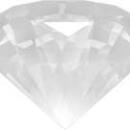
Fake Diamonds: The Great Diamond Attack
A popular game show would have three people all say that they were someone and the contestant would try to find out who was the … and diamond lookalikes. “What is a real diamond?” is a difficult question these days. And the problem of separating a fully natural diamond from all the modern possibilities is quite demanding. So what is a real diamond? Let’s start …, Synthetic corundum and spinal, Glass) or simulants are quite easy to separate. The diamond tester and understanding gem properties make choosing the diamond an easy task with these older lookalikes. Apathy and sloppy observation can …
-
Understanding the Diamond Buying Game
…. The soda is the same and you can shop based on price or convenience; the product is the same. People like shopping this way. I like it this way. Diamonds are not this way. The four C’s of diamonds are not that old, less than 100 … that system every business and diamond seller had their own system. It was impossible to buy a diamond without seeing it first. The GIA four C system is supposed to be an agreed upon grading standard but in reality this is not always …
-
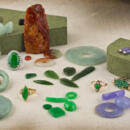
Gem in the Spotlight: Jade
Jade has one of the richest heritages of all gemstones. People have been using jade from as early as 6,000 BC, and it has been an incredibly important … given it such a prominent place in human history? The term “jade” actually refers to two completely different gems: nephrite and jadeite. These are actually two unique mineral species, but since they have been confused for so many …, they are both referred to by the blanket term “jade”. Both materials are silicates that have exceptional toughness, can be carved, and can be taken to a high polish. Nephrite is commonly found in a darker olive green color but can …
-
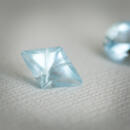
Gem in the Spotlight: Aquamarine
… of the beryl family, Aquamarine has some illustrious cousins in addition to a rich history of its own. The Mythology of Aquamarine Long associated with tranquility and happiness, aquamarine was also thought to instill courage, cure …Greeks used aquamarine often in jewelry believing it captured the true spirit of the sea. aquamarine was believed to guarantee a happy marriage Best known for its beautiful blue color, aquamarine was used to bring happiness, eternal …
-
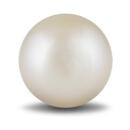
Gem in the Spotlight: Pearl
Pearls have captured the imagination and adoration of people from diverse backgrounds throughout history. They are both simple and infinitely … science, history, and lore surrounding this most unique gem. How Are Pearls Formed? Pearls are formed when a foreign object enters the shell of a mollusk and irritates the soft mantle tissue within. In response to the irritant, the … object and protect itself. Over time, layer upon layer of nacre is deposited around the irritant, eventually forming a pearl. This process can occur naturally or via human intervention. Natural pearls grow in the wild without human …
-
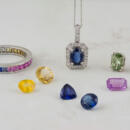
Gem in the Spotlight: Sapphire
… known as ruby), but is especially popular in deep blue. Fancy colored sapphires including pink, green, orange, and golden yellow are magnificent in any jewelry. See More on Etsy › With the exception of the diamond, which measures 10 on …Few gems capture the imagination as does sapphire. Sapphire’s beauty inspired people to wonder. Ancient cultures had many … and beliefs about the sapphire. The ancient Persians believed the earth rested on a giant sapphire whose reflection gave the sky its color. Ancient priests and sorcerers honored sapphire above all gems, for this stone enabled them to …
-
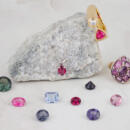
Gem in the Spotlight: Spinel
Spinel, the Great Imposter” sounds like the title of an action movie, but it could also be the title of this article. For years … looking stones. In recent years, spinel has started to move out of the shadows and be appreciated in its own right, and we can see why. Its colors rival even the best rubies, sapphires, tourmalines, and other more popular gems. For …3rd time in the last one hundred years, the industry is modifying the official birthstone list. Spinel will be joining peridot as the August birthstone! This change was officially made in 2016, but only in the last couple of years have…
-
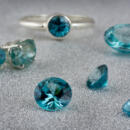
Gem in the Spotlight: Blue Zircon
… color. But, zircon can be almost any color you can imagine including red, yellow, orange, brown, green, champagne, golden, saffron, and colorless. Zircon colors are pure and have that distinctive fire that sets it apart from other gems. …Zircon may be last in the alphabet of gemstones, but it is first in sparkle. The crystal structure of zircon creates one of the liveliest displays found in … then other colored gems? Zircon has a high refractive index (1.92-2.01). The refractive index (abbreviated RI) of a gemstone is its optical property that refers to the ratio of the speed of light in a vacuum to the speed of light …
-
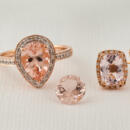
Gem in the Spotlight: Morganite
Morganite is a beautiful, soft pink gemstone and a graceful expression of elegance. It is not a very well-known gem, but …pink hue though it also occurs as soft pink, violet-pink, or pale salmon. It is the subtle, understated nature of Morganite’s color that sets it apart from many of the more popular gemstones. Morganite has an impressive family tree. It… aquamarine. Because of its association with emerald it is sometimes called “Pink Emerald”. Other names for Morganite are “Pink Beryl”, “Rose Beryl”, and “Cesian (or caesian ) Beryl”. “Cesian” refers to the presence of the mineral …